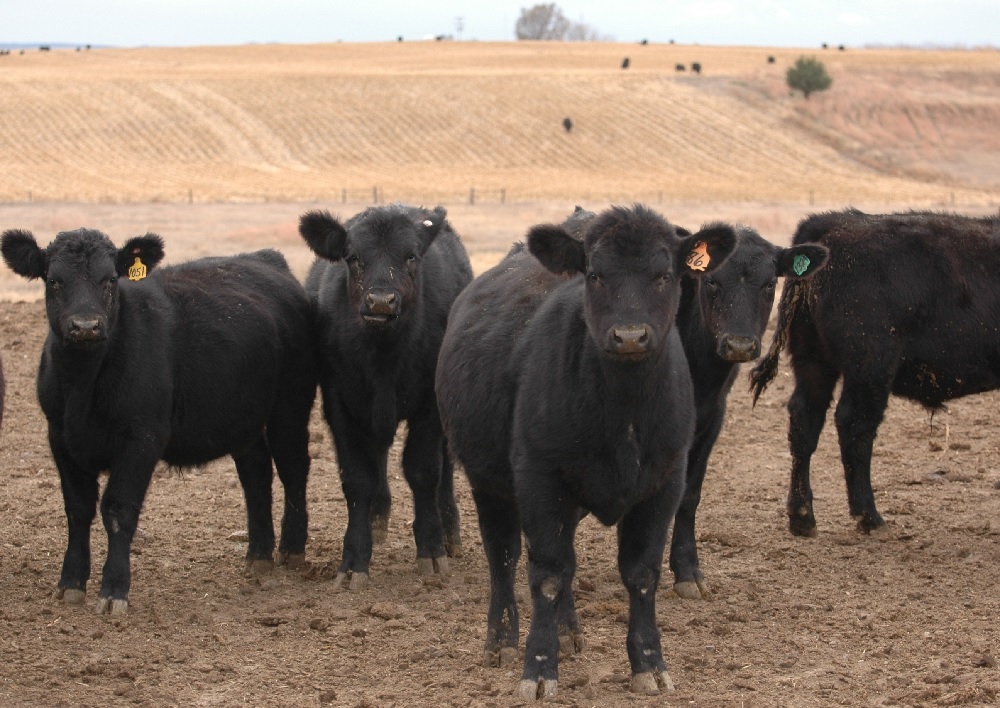
Agricultural News
Beef Cattle Production in the US Not a Significant Contributor to Long-Term Global Warming-
Mon, 11 Mar 2019 14:58:26 CDT
 USDA's Agricultural Research Service (ARS) has completed a life cycle analysis of beef cattle production in the United States that concluded cattle convert feed about as efficiently as pork and poultry and are not large contributors to global warming.
USDA's Agricultural Research Service (ARS) has completed a life cycle analysis of beef cattle production in the United States that concluded cattle convert feed about as efficiently as pork and poultry and are not large contributors to global warming.
The scope of the analysis spanned five years, seven cattle-producing regions and used data from 2,270 survey responses and site visits nationwide.
"We found that the greenhouse gas emissions in our analysis were not all that different from what other credible studies had shown and were not a significant contributor to long-term global warming," said ARS agricultural engineer Alan Rotz, who led the analysis team, in a study summary on the agency's website.
The aim of the study was to establish baseline measures that the U.S. beef industry can use to explore ways of reducing its environmental footprint and improve sustainability.
Rotz collaborated with former ARS research associate Senorpe Asem-Hiablie, Greg Thoma of the University of Arkansas-Fayetteville and Sara Place, with National Cattlemen's Beef Association, which is partially funding the study. The team began its beef life-cycle analysis in 2013 and published the first of two sets of results in the January 2019 issue of the journal Agricultural Systems- click or tap here to jump there..
Among the results to emerge so far:
The seven regions' combined beef cattle production accounted for 3.3 percent of all U.S. GHG emissions. By comparison, transportation and electricity generation together made up 56 percent of the total in 2016 and agriculture in general 9 percent.
Fossil energy (for example, fuel) use in cattle production accounted for less than 1 percent of the total consumed nationally.
Cattle only consumed 2.6 pounds of grain per pound of beef cut weight (or, butchered carcass weight), which was comparable to pork and poultry.
Beef operations in the Northwest and Southern Plains had the highest total water use (60 percent combined) of the seven regions analyzed. Irrigating crops to produce feed for cattle accounted for 96 percent of total water use across all the regions.
"We found that the greenhouse gas emissions in our analysis were not all that different from what other credible studies had shown and were not a significant contributor to long-term global warming," Rotz said.
Two areas for potential improvement are water use and reactive nitrogen losses. Water use is increased in the West where U.S. beef cattle are concentrated. Reactive nitrogen losses (at 1.4 teragrams or 15 percent of the U.S. total) mainly in the form of ammonia can lead to smog, acid rain and algal blooms, for example, and potentially pose a public health concern.
The purpose of the analysis wasn't to identify the top-performing regions or most efficient types of operations, said Rotz, but rather to systematically measure the use of fuel, feed, forage, electricity, water, fertilizer and other inputs to raise beef cattle throughout the country from birth to slaughter.
Using a computer program called the "Integrated Farm System Model" (IFSM), his team also estimated net releases of reactive forms of nitrogen such as ammonia from manure and urine, as well as the three major greenhouse gases (methane, carbon dioxide and nitrous oxide). The gases are so-named for their tendency to trap heat in the atmosphere and contribute to warming of the earth's surface, extreme weather patterns and other global climate change events.
In the next six months, the team will combine the results of its IFSM analysis with postharvest data from other sectors of the beef supply chain namely, processing, packing, distribution, retail, consumption and waste handling. That phase will be accomplished using the open-source life-cycle assessment program "OpenLCA."
Together, these data will be used to generate a national assessment of the beef industry's resource use, economics, net losses of GHG and other emissions, providing a critical tool for sustainably producing beef as an important source of lean protein and nutrients.
The Agricultural Research Service is the U.S. Department of Agriculture's chief scientific in-house research agency. Daily, ARS focuses on solutions to agricultural problems affecting America. Each dollar invested in agricultural research results in $20 of economic impact.
Source- USDA
WebReadyTM Powered by WireReady® NSI
Top Agricultural News
More Headlines...





